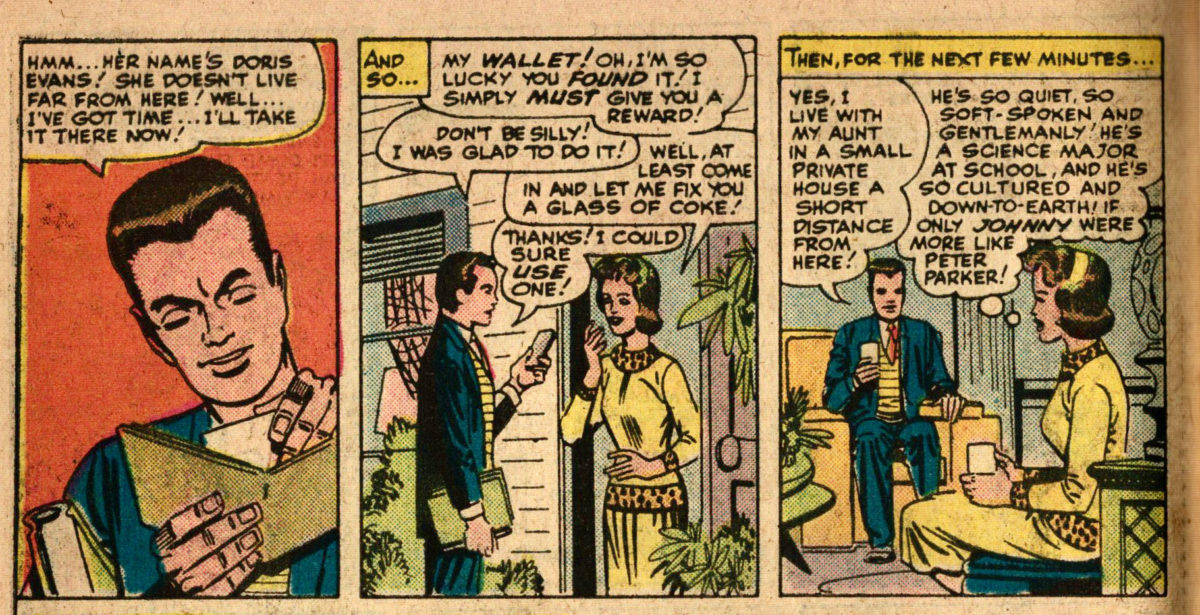Featuring: Daredevil
Release: April 2, 1964
Cover: June 1964
12 cents
Story: Stan Lee
Art: Joe Orlando
Inking: Vince Colletta
Lettering: S. Rosen
22 pages

The credits have two names that are new to us. Last issue was drawn by Bill Everett, who did an excellent job, but apparently also missed his deadline by a wide margin. Whatever happened, he was not invited back.

The artist is now Joe Orlando, who has been working in comics since the early ’50s, including occasional freelance work for Marvel. This is his first superhero work, previously drawing horror, western, and war comics, most notably for EC Comics. He worked in the comics field for many decades as artist, writer, and editor, most of that time with DC comics. As far as I can tell, this short stint on Daredevil is the last work he’ll ever do at Marvel.
Here’s a peek at some of the work he’d been doing in the previous 13 years.
Vince Colletta had been working as an artist for Marvel for about a decade, primarily on romance comics. He had recently moved toward inking. He will soon become a regular inker over Jack Kirby, and begin a very long run inking Thor. I believe this is also his first ever superhero work.
His work is not always loved by critics or his colleagues. He has a reputation for choosing professionalism over artistry. I see no evidence of this or any other flaw in this particular comic. I will caveat that I haven’t always the best eye for art, nor any particular talent for separating the contributions of the penciler from the inker when I look upon a page.
Here’s a sampling of his prior work.





































